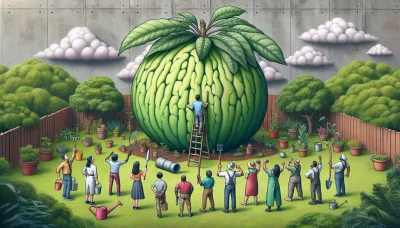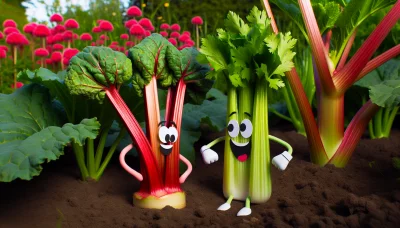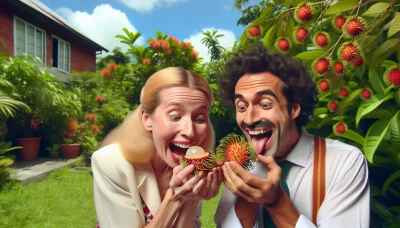Durian benefits Quiz
Test Your Knowledge
Question of
The Surprising Benefits of Durian
Durian, often known as the "king of fruits," is a unique tropical fruit that is highly regarded in Southeast Asia. Its distinct aroma and formidable thorn-covered husk hide a rich, creamy flesh that is beloved by many and notorious to others. For gardening enthusiasts, durian represents an intriguing challenge and an opportunity to cultivate a truly exotic specimen. Beyond its unique taste and texture, durian offers a range of health benefits. It is packed with vitamins and minerals, including vitamin C, potassium, and dietary fiber, which are essential for maintaining a healthy body. Additionally, the fruit is rich in antioxidants, which can help reduce inflammation and lower the risk of chronic diseases. Growing durian can also enhance biodiversity in gardens, attracting a variety of pollinators and contributing to the ecological balance. Embracing durian in your garden not only promises a rewarding horticultural adventure but also allows you to reap the nutritional benefits of this extraordinary fruit.
Nutritional Profile of Durian
| Nutrient | Amount Per Serving |
|---|---|
| Calories | 357 kcal |
| Protein | 3.6 g |
| Fat | 13 g |
| Carbohydrates | 66 g |
| Fiber | 9 g |
| Vitamin C | 80 mg |
| Potassium | 1059 mg |
| Iron | 1.1 mg |
| Calcium | 6 mg |
How Durian Benefits Your Garden
- Enriches soil quality through leaf and fruit drop, adding organic matter as they decompose.
- Promotes biodiversity by attracting a variety of pollinators and wildlife, which can aid in the pollination of other plants.
- Benefits other plants by providing shade and cooler ground temperatures, which can help in the growth of shade-loving plants.
- Improves water retention in the soil, which can help in maintaining soil moisture levels beneficial for plant growth.
- Acts as a natural pest repellent, thus reducing the need for chemical pesticides that can harm the environment.
Growing Durian: Tips and Tricks
When it comes to planting durian trees, selecting a suitable location is crucial. These trees thrive in warm, tropical climates with well-draining soil. Start by planting your durian tree in a spot that receives ample sunlight, as this is essential for its growth and fruit production. Watering is another critical aspect; durian trees require consistent moisture, especially during their growing and fruiting stages. However, be careful not to overwater, as this can lead to root rot. Mulching around the base of the tree can help retain soil moisture and regulate soil temperature. Additionally, regular feeding with a balanced fertilizer will support the tree's nutritional needs. Pruning is also important to remove any dead or diseased branches and to encourage a strong, productive tree structure. With patience and proper care, your durian tree will flourish, providing delicious fruits for years to come.
Pest Management for Durian Trees
Common pests that target durian trees include:
- Bark Beetles
- Fruit Flies
- Mealybugs
- Spider Mites
Natural methods to protect durian trees:
- Introduce beneficial insects like ladybugs and lacewings to control mealybugs and spider mites.
- Use neem oil sprays to effectively deter pests while being safe for beneficial insects.
- Employ pheromone traps to capture and monitor fruit flies.
- Maintain healthy soil with organic compost to strengthen the trees' natural defenses.
- Regularly prune and remove infested branches to prevent the spread of bark beetles.
Harvesting and Storing Your Durian
Recognizing when a durian is ripe for harvest is essential for enjoying its unique flavors to the fullest. A ripe durian typically emits a distinct, strong aroma that can be noticed even while it's still on the tree. Additionally, the fruit's husk begins to crack slightly, making it easier to identify the perfect time for harvest. To safely harvest durian, it's crucial to wear protective gear, such as gloves and a hard hat, due to the fruit's heavy weight and spiky husk. After harvesting, storing durian properly is key to maintaining its freshness and flavor. Durians should be consumed within a few days after ripening for the best taste. If you need to store them, keep the fruits in a cool, well-ventilated area. For longer storage, durians can be peeled, seeded, and frozen, though this may slightly alter the texture and taste upon thawing. Following these tips will help ensure your durians are delicious and enjoyable.
Durian Recipes for the Gardener
- Durian Smoothie : Blend fresh durian pulp with banana, a bit of honey, and ice cubes for a refreshing smoothie.
- Durian Ice Cream : Mix durian flesh with coconut milk and sugar, then freeze. Enjoy a creamy, tropical treat that's perfect for hot days.
- Durian Pancakes : Add durian puree to your pancake batter to give your breakfast a unique, aromatic twist.
- Durian Muffins : Fold chunks of durian into your favorite muffin recipe for a moist, flavorful snack.
- Durian Sticky Rice : Serve sweetened durian over sticky rice for a simple, yet satisfying dessert.
- Baked Durian Chips : Thinly slice durian flesh, bake until crisp, and enjoy a crunchy, healthy snack.
- Durian Salsa : Combine durian with mango, onion, cilantro, and lime juice for a sweet and savory salsa that pairs well with grilled meats or tortilla chips.












